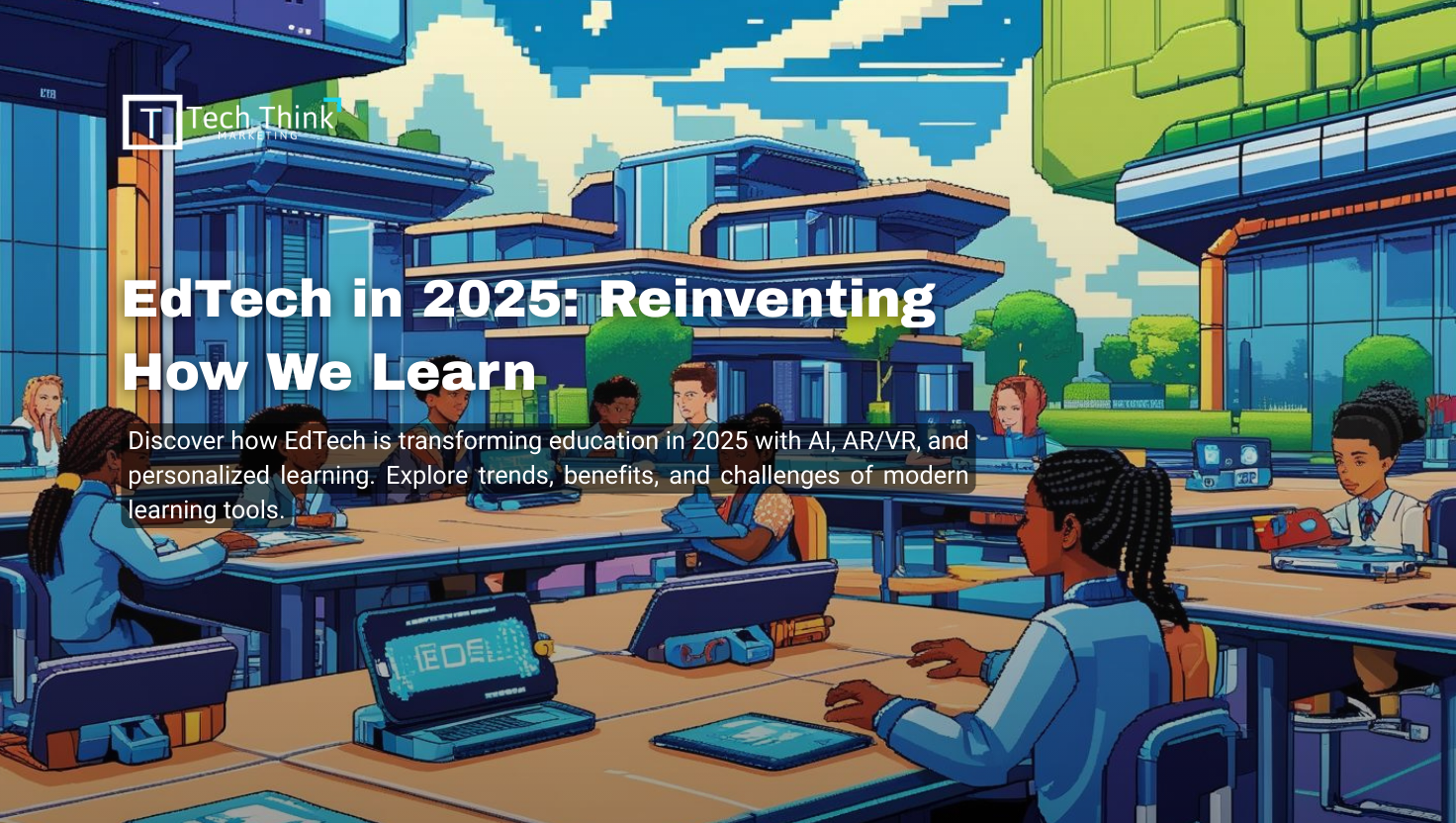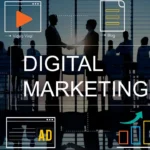Office No. 608, Lunkad Sky Station, Viman Nagar Road, Pune, Maharashtra 411014, India
Phone: +1 213-261-0597
contact@techthinkmarketing.com
Table of Contents
Toggle1. Introduction
EdTech in 2025 In 2025, education is no longer confined to classrooms or traditional textbooks. Technology has transformed the way students, teachers, and institutions engage with learning. With the rise of immersive experiences, AI tutors, and global digital classrooms, EdTech in 2025 is not just about convenience—it’s about personalized, data-driven, and impactful education. Let’s explore how EdTech is reinventing how we learn in 2025.
2. The Evolution of EdTech
EdTech in 2025 Reinventing How We Learn short for education technology, has come a long way from computer labs and e-learning portals. The 2020s witnessed accelerated adoption due to the COVID-19 pandemic, and since then, there’s been no turning back. In 2025:
- Learning happens on smartphones, smart TVs, and VR headsets.
- Platforms like Byju’s, Coursera, Khan Academy, and Udemy have scaled globally.
- Traditional schools are blending physical and digital teaching.
EdTech in 2025 Reinventing How We Learn The education industry is no longer limited to academia—it now spans corporate learning, skill-based training, and lifelong education for all age groups.
3. Key Trends Shaping EdTech in 2025
1.
EdTech in 2025 AI analyzes the speed, strength, and preferences of any student that provides an analog lesson. Platforms such as Squirrel AI in China and the United States in Novan lead this revolution.
2. IMMERSIVE LEARNING WITH AR/VR
Virtual field trips, 3D science laboratories, and augmented and virtual reality make historical renderings that make learning fun and unforgettable.
Example: EdTech in 2025 A student can detect the surface of Mars or dive into human blood circulation through the VR headset.
3. Microlling for Travel Lifestyle
Mobile-first, short-cut texts designed to learn help students and professionals absorb knowledge in small outbursts.
4. Blockchain for identification
Diploma and course certificates are now stored safely on blockchain, which ensures that manipulation-related items of educational results.
5. Edutainment: Education comes from entertainment
Gamification, interactive videos, and storytelling techniques make learning very attractive, especially for Gen Z and Gen Alpha students.
4. Benefits of Next-Gen Learning Platforms
EdTech in 2025 Easy to use
With mobile-first platforms, everyone from remote villages to busy cities can use world-class education at their fingertips.
Strength
FMMIUM models, state EDTech initiatives, and EdTech in 2025 open access courses are reduced and reduce educational differences.
Flexibility
Students can determine the speed, repeat the module, and choose the way to learn the goals or interests in their careers.
Real-time response
Immediate quizzes, AI-operated responses, and progress analysis help students and coaches to monitor and improve quickly.
5. Challenges in the EdTech Ecosystem
Despite the rapid growth, Edtech faces many obstacles:
- Digital distinction
Each student does not have access to stable internet or digital devices. This inequality expands the educational gap between urban and rural students. - Teacher education
Teachers should not only be trained in using EDTech tools, but also to adapt a hybrid teaching model effectively. - Privacy and data security
Since EDTech platforms collect huge amounts of user data, the security of the student’s privacy is a top priority. - Conducted on the screen
Excessive screen time can cause burnout from time to time, and attention can be reduced between students.
6. Future Outlook: What Lies Ahead
Global classroom
Language barriers are dissolved thanks to real -time translations, so that students from different countries can collaborate on projects.
Ai teacher assistant
AI -Robots will answer the students’ questions, track homework and even provide mental health care, free human teachers to focus on strategic teaching.
Neuroidaptive learning
Edtech will be adapted based on brainwaving analysis in real time, and adjusting text difficulties according to the student’s mental state and engagement level.
Lifestyle learning ecosystem
Learning in 2025 is not limited to students. Professionals, housewife and retired Edtech act to stay relevant.
7. Conclusion
EdTech in 2025 is not just an industry—it’s a movement. It’s redefining the very fabric of how we learn, teach, and grow. With AI, immersive technology, and global connectivity, education is becoming more inclusive, personalized, and impactful than ever before.
As we move forward, the focus should be on equal access, ethical tech, and continuous innovation. The classroom of the future is here—and it’s limitless.





